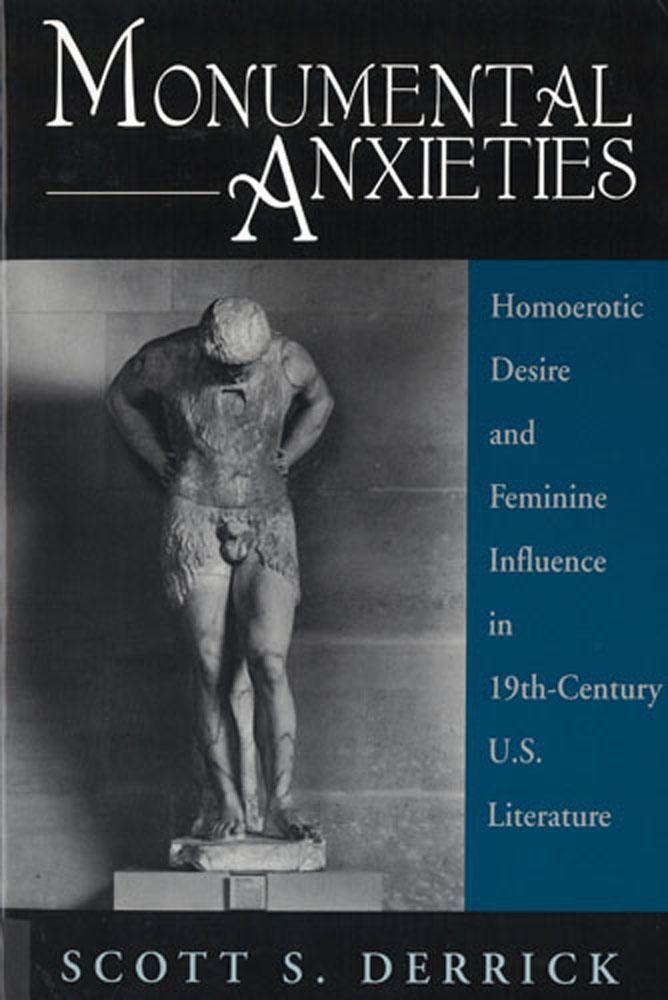
Zustellung: Sa, 12.07. - Fr, 18.07.
Versand in 3-4 Wochen
VersandkostenfreiBestellen & in Filiale abholen:
Recent gender-based scholarship on nineteenth-century American literature has established male authors' crucial awareness of the competition from popular women writers. And critical work in gay studies and queer theory has stressed the importance in canonical American literature of homoerotic relations between men, even before "homosexuality" became codified at the end of the century. Scott Derrick draws on these insights to explore the ways in which male authors struggle to refigure literature-historically devalued as feminine-as a masculine and heterosexual enterprise. Derrick focuses on scenes of compositional crisis that reveal how male identity itself is at risk in the perils and possibilities of being a male author in a feminized literary marketplace.
Inhaltsverzeichnis
List of Illustrations
Acknowledgments
Introduction: Authoring the Self: Gender, Identity, and Authorial Self-Construction in Nineteenth-Century U.S. Culture
PART 1 Purloined Letters: The Fiction of Nathaniel Hawthorne and Edgar Allan Poe
1 Gender and the Scene of Writing: Homophobia, the Feminine, and Narrative in Nathaniel Hawthorne's The Scarlet Letter
2 Edgar Allan Poe and the Purloined Mother
PART 2 Circuits of Desire: Authority in the Early and Late Fiction of Henry James
3 Early Authorizations in Roderick Hudson and The American
4 Late Authorizations in The Ambassadors and The Wings of the Dove
PART 3 Ruptured Bodies, Ruptured Tales: Masculine Injury and Transcendence in Turn-of-the-Century U.S. Literature
5 What a Beating Feels Like: Authorship, Dissolution, and Masculinity in Upton Sinclair's The Jungle
6 Behind the Lines: Homoerotic Anxiety and the Heroic in Stephen Crane's The Red Badge of Courage
Conclusion: Beyond Influence, Beyond Homoeroticism, and Beyond the Pleasure Principle in F. Scott Fitzgerald's The Great Gatsby
Notes
Index
Acknowledgments
Introduction: Authoring the Self: Gender, Identity, and Authorial Self-Construction in Nineteenth-Century U.S. Culture
PART 1 Purloined Letters: The Fiction of Nathaniel Hawthorne and Edgar Allan Poe
1 Gender and the Scene of Writing: Homophobia, the Feminine, and Narrative in Nathaniel Hawthorne's The Scarlet Letter
2 Edgar Allan Poe and the Purloined Mother
PART 2 Circuits of Desire: Authority in the Early and Late Fiction of Henry James
3 Early Authorizations in Roderick Hudson and The American
4 Late Authorizations in The Ambassadors and The Wings of the Dove
PART 3 Ruptured Bodies, Ruptured Tales: Masculine Injury and Transcendence in Turn-of-the-Century U.S. Literature
5 What a Beating Feels Like: Authorship, Dissolution, and Masculinity in Upton Sinclair's The Jungle
6 Behind the Lines: Homoerotic Anxiety and the Heroic in Stephen Crane's The Red Badge of Courage
Conclusion: Beyond Influence, Beyond Homoeroticism, and Beyond the Pleasure Principle in F. Scott Fitzgerald's The Great Gatsby
Notes
Index
Produktdetails
Erscheinungsdatum
01. Dezember 1997
Sprache
englisch
Seitenanzahl
280
Autor/Autorin
Scott S Derrick
Verlag/Hersteller
Produktart
kartoniert
Gewicht
449 g
Größe (L/B/H)
230/153/19 mm
ISBN
9780813524726
Bewertungen
0 Bewertungen
Es wurden noch keine Bewertungen abgegeben. Schreiben Sie die erste Bewertung zu "Monumental Anxieties" und helfen Sie damit anderen bei der Kaufentscheidung.








